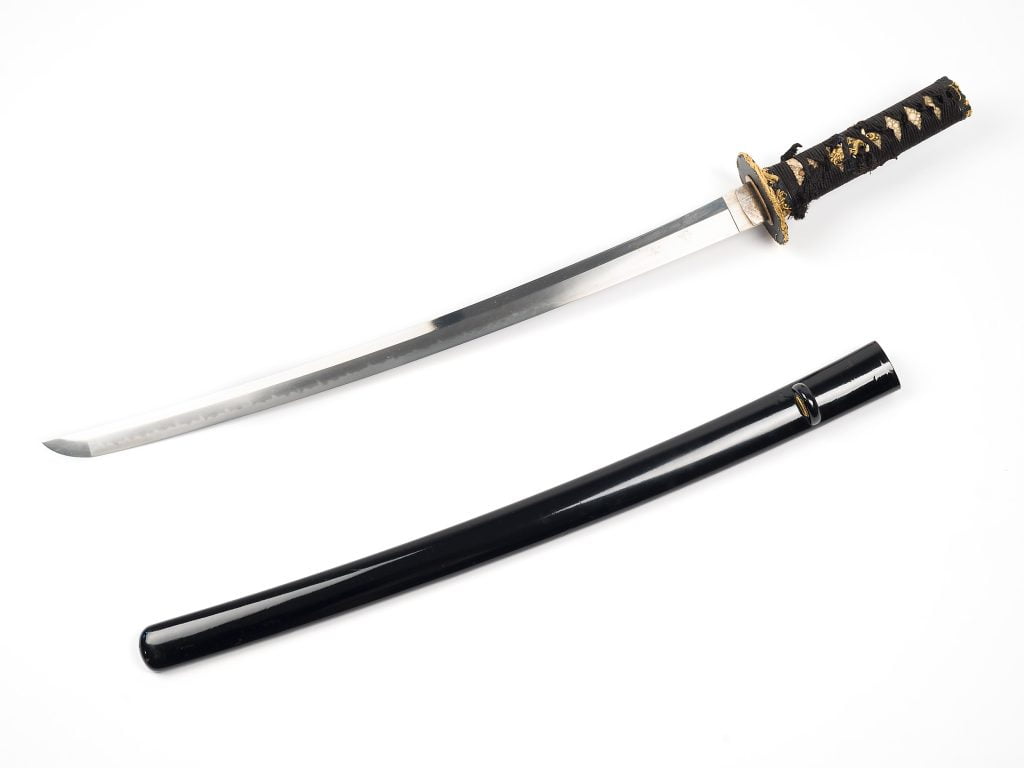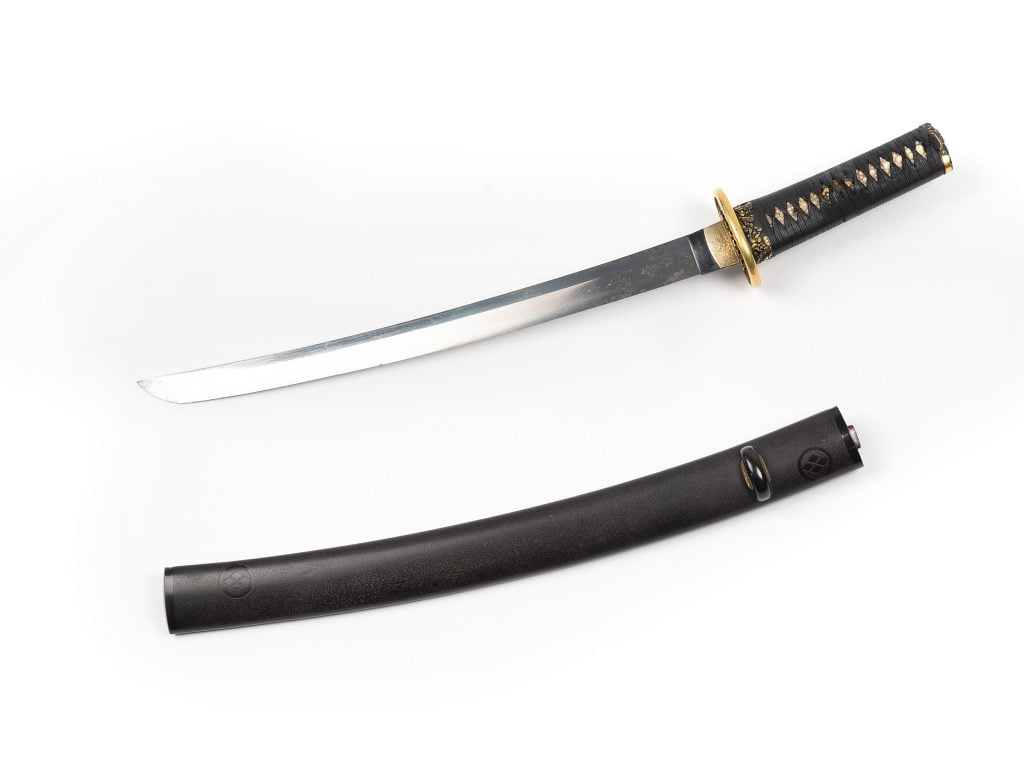Japanese master
Mumei Wakizashi in Koshirae with Kikyō Mon, Japanese Master
Koto era
This Japanese wakizashi sword features a blade length (nagasa) of 478 mm (overall length 69 cm) with a shinogi-tsukuri shape, torii zori bend, and gyo-no-mune (iorimune) back. The temper line (boshi & kissaki) is komaru with a chu-kissaki, and the temper pattern (hamon) is suguha-midare and ko-midare. The hada pattern (jihada) is masame with itame on the omote. The blade dates to the Koto period and is in excellent condition with a very nice polish.
The tang (nakago) has a kiri tip and kiri yasurime file marks, with two mekugi-ana (peg holes). There is no signature (mei).
The handle (tsuka) is made of samegawa (rayskin) on wood, wrapped in black silk. The menuki are iron, depicting a branch with golden S-leaved flowers. The tsuba is shakudo-nanako, mokko-shaped, with floral decorations in shakudo, copper, and gold. The fuchi-kashira are shakudo-nanako with stylized branches. The blade collar (habaki) is copper in black, and there are two gold washers (seppa).
The kozuka is ishime copper in black, with stylized five-petaled flowers in gold and signed. The kogai is similar to the kozuka, signed with a kikyo mon. The saya (scabbard) is black with fine speckled lacquer, featuring stylized floral tendrils and three five-petaled flowers (two in gold, one in black). The kojiri, kurigata, uragawara, and koiguchi are shakudo-nanako with stylized flower tendrils.
This very nice wakizashi has an excellent Koto blade and uniform, very good koshirae, including a new kozuka and kogai. It originates from the Albert Polster Collection (former president of the European branch of the NBTHK), 1986.







